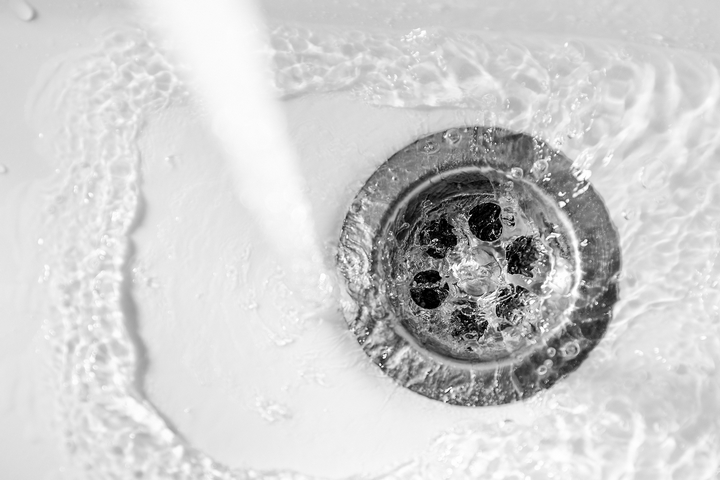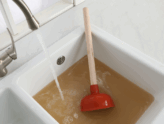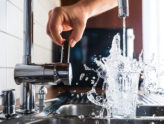The COVID-19 outbreak has shined a spotlight on the importance of personal hygiene, particularly in washing our hands. We are advised to clean our hands with soap and warm water for at least twenty seconds, which helps to reduce the spread of the virus. Washing our hands should be a simple task with no complications, unless a clogged bathroom sink limits our access to clean, available water.
In the midst of COVID-19, a clogged bathroom sink may feel alarming since personal hygiene should be our top priority. Every time we wash our hands, we don’t want to worry about the water being unable to pass through the clogged drain. Plus, it doesn’t seem sanitary to keep a bathroom sink brimming with water, which you just used to wash the germs and bacteria off your hands.
An important part of combating the current COVID-19 pandemic is to ensure our plumbing systems remain available and accessible. If you notice your bathroom sink does not drain as it used to, make sure this problem is quickly rectified. Call a plumber for immediate help, and try out these seven home remedies for a clogged bathroom sink:
Remedy #1: Prevent the clog in your bathroom sink
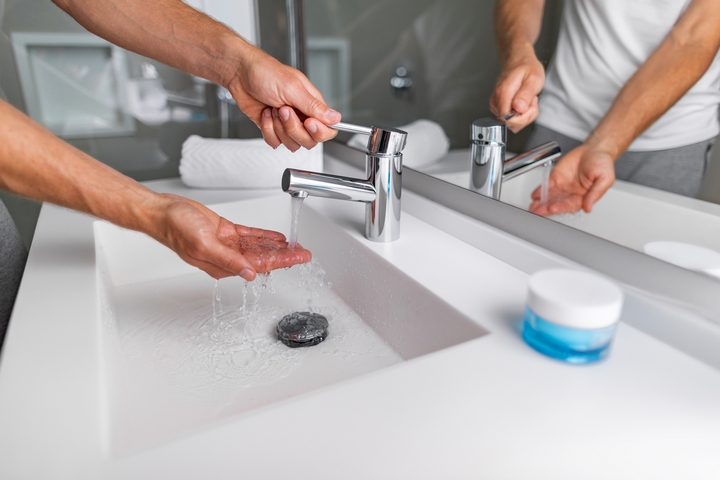
Lots of things get washed down the bathroom sink. A clog occurs when something gets trapped and disrupts the flow of water. The common culprits may include hair, soap scum, along with bits and pieces from personal care products. If these undesirable items get stuck in the pipes, they will leave you with a slow-running drain.
By the time you notice a clogged bathroom sink, you already have a big plumbing problem on your hands. The best home remedy for a clogged bathroom sink is to make sure it never happens in the first place. In order to prevent the sink from being clogged, follow these best practices diligently:
- Firstly, try to limit the hair from going down the drain. The little hairs from shaving may not seem like a problem, but they can eventually accumulate and cause a clog.
- Secondly, run hot water after using the sink. This will flush out the debris that would otherwise get stuck in the drain.
- Finally, clean your sink’s stopper on a regular basis. Stoppers generally do a good job of catching hair and debris, but the gunk can potentially slip through if you don’t clean them properly.
Remedy #2: Clear the clogged sink with hot water
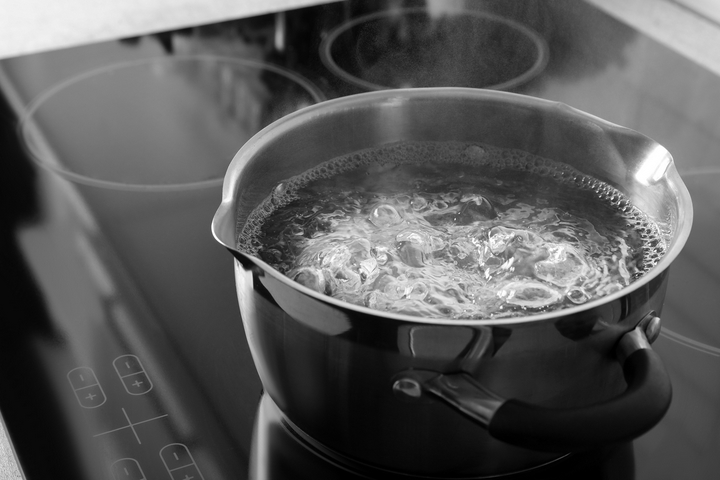
Boiling water is one of the most effective home remedies to clear a clogged bathroom sink. Start by boiling warm water in a kettle or a pot. Then, slowly pour the water down the drain in stages, allowing the water to clear the blockage. Once you poured enough water, the clog should begin to disintegrate. Repeat this process until you clear all the remnants from the sink.
Remedy #3: Use a plunger on the clogged bathroom sink
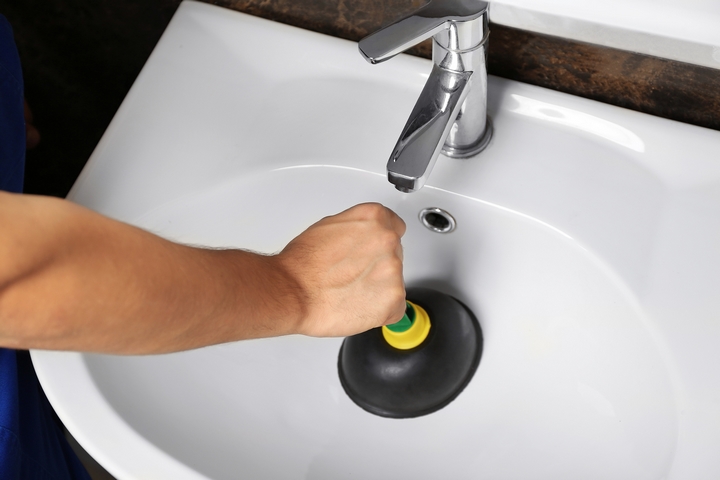
A plunger is another effective tool to combat clogged bathroom sinks. This method works best with smaller plungers. First, remove the sink stopper and set it aside. Then, add some water to the sink before you place the plunger over the drain. Use considerable force to create a tight seal. Next, pump the plunger up and down for about twenty seconds.
At this point, you can remove the plunger. If the method has been successful, you should see that the water now drains very quickly. If not, you can try this method again, while applying more force than your previous attempt.
Remedy #4: Use baking soda and vinegar
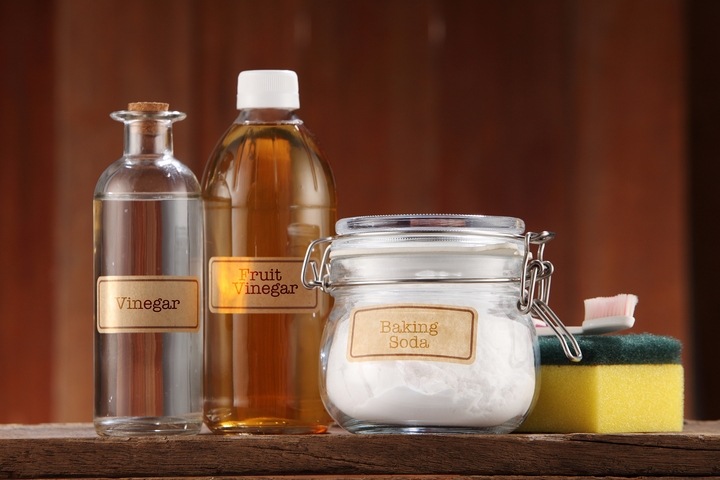
The combination of baking soda and vinegar is effective against clogged bathroom sinks. All you have to do is mix equal parts of baking soda and vinegar in a container, which should cause the mixture to fizz. Then, you should pour it down the drain quickly. The fizzing action helps to remove whatever has built up inside the drain.
Next, let the mixture sit in the drain for at least an hour, or preferably overnight if possible. In the morning, flush out the mixture with hot water. Hopefully, the end result is that you see noticeable improvements with unclogging the bathroom sink.
Remedy #5: Use baking soda and salt
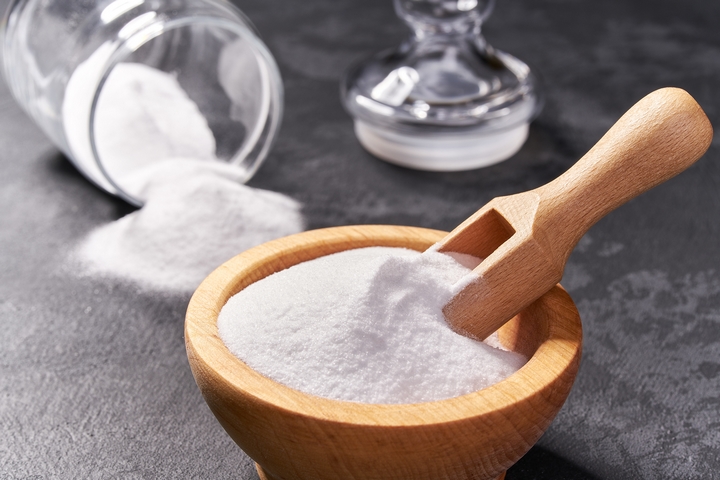
Similar to the previous home remedy, you can try using baking soda and salt to clear the clogged bathroom sink. Mix half a cup of baking soda alongside half a cup of salt. Then, insert this mixture down the drain. Wait for half an hour or so before you pour boiling water into the drain. This method is a bit more aggressive and will hopefully help to clear tougher blockages.
Remedy #6: Use sodium hydroxide
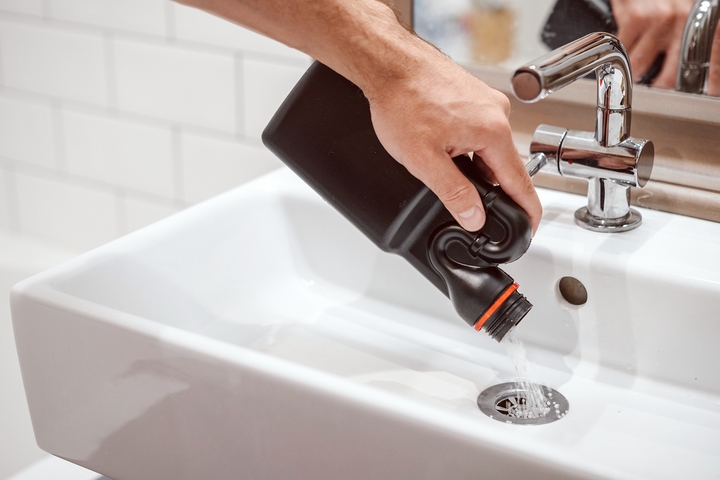
For persistent blockages, you may choose to use sodium hydroxide on the clogged bathroom sink. However, you will need to be extremely careful since sodium hydroxide can burn the skin. Always make sure you wear rubber gloves and eye protection before handling the chemical solution.
For this method, fill a plastic bucket with cold water until it’s almost full. Then, add three cups of sodium hydroxide before you stir with a wooden or plastic spoon. Avoid using a metal spoon since sodium hydroxide may react badly against it. After a while, you’ll notice the mixture starts to fizz. Next, pour the mixture down the drain and let it sit for about half an hour. Finally, flush the drain with boiling water. Repeat as needed.
Remedy #7: Clean the pipe

The process of cleaning the pipe is relatively complex. It may seem daunting if you’ve never attempted DIY before, so contacting a professional plumber is advised. In order to do the cleaning, place a bucket under the U-shaped pipe (the trap), which catch any water inside the pipe. Next, loosen the slip nuts at both ends of the pipes with a wrench.
Then, remove the trap and empty the debris into the bucket. An old toothbrush is excellent for helping to dislodge the stubborn gunk inside the trap. Finally, rinse out the trap and reattach it. In many cases, this should resolve the problem with the clogged bathroom sink.

